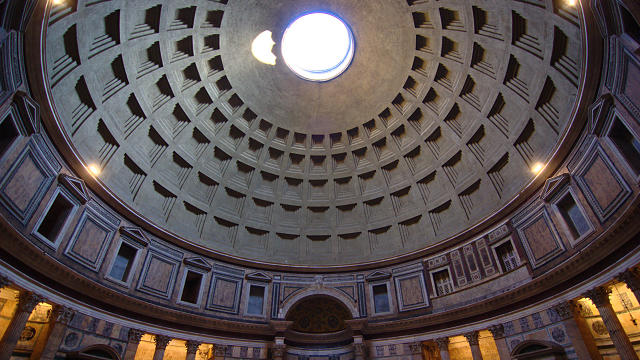Construction Materials
Concrete Is Not As Strong Of A Building Material As We Thought
Shaunacy Ferro | Fast Company
October 21, 2014
CLIMATE CHANGE MAY CAUSE REINFORCED CONCRETE STRUCTURES TO DETERIORATE QUICKER THAN EXPECTED, A NEW STUDY FINDS.
Some of our favorite building materials are also the most vulnerable. Think of glass--floor-to-ceiling windows are awesome, until they fall 18 stories onto the street. But we typically think of concrete as solid. Concrete structures from ancient Rome, like the Pantheon and the Colosseum, are still standing almost 2,000 years later.
"PROTECTIVE COATINGS COULD HELP PREVENT EARLY BREAKDOWN OF THE MATERIAL."
However, a new study by civil engineers at Northeastern University finds that as a building material, the longevity of modern concrete--which unlike the ancient Roman building material, is typically reinforced with steel rebar--may not be all it's cracked up to be. Due to the way climate change will interact with this modern concrete-steel mixture, reinforced concrete architecture will likely have a shorter lifetime than building codes previously accounted for. Our cities won't just be at risk from extreme weather and flooding, they'll also face a greater risk of concrete urban infrastructure--like buildings and bridges--deteriorating and collapsing. Increased CO2 in the atmosphere, acid rain, and changing temperatures all accelerate the process of environmental elements (like chloride from salty water) worming their way through concrete and causing the reinforcing steel inside to decay.
 Flickr user Jun
Flickr user Jun
Northeastern University's Mithun Saha and Matthew Eckelman studied the potential effects of climate change on concrete infrastructure by predicting how rising CO2 and temperature levels would play out over the next century in Boston. Their results "suggest that new concrete structures constructed in urban coastal regions using current code requirements may degrade prematurely and require costly maintenance over their service life," the researchers write.
According to The Boston Globe:
“Starting in 2025 is when [we expect] to see the concrete cover on buildings start to fail, assuming they were built to code,” Eckelman says. With accelerated warming added to existing rates of decay, they predict that 60 percent of Boston’s concrete buildings will face structural deterioration by 2050.
There’s no formal estimate for the scale of the cost, but a 2002 report from the Federal Highway Administration estimated that it takes $4 billion per year simply to maintain the country’s concrete bridges. That doesn’t include aging concrete buildings that will need to be repaired or torn down.
The study looked at the worst-case scenarios offered by climate change projections, so the predictions are a bit gloomy. "Many existing concrete structures are likely to suffer from decreased durability due to climate change," the researchers write in their study in the journal Urban Climate. "As this risk varies widely with location, environmental exposure and material design is therefore critical to predict for every individual structure," they continue, suggesting the protective coatings could help prevent early breakdown of the material. It's possible that we should be thinking about building with other materials, too. Wooden skyscraper, anyone?
The content of this article is intended to provide general information and as a guide to the subject matter only. Please contact an Advise & Consult, Inc. expert for advice on your specific circumstances.
SOURCE: www.fastcodesign.com
